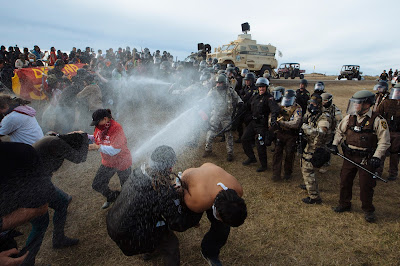Dear Evangelical Preachers
I think you believe you’re helping right now.
I think you believe you’re actually glorifying God.
I think you believe you’re somehow bolstering the Gospel.
I think you believe that you’re engineering some conversation-stopping, sanctified mic drop, by crediting God with Donald Trump’s ascension to the U.S. Presidency.
You’re not doing anyone of these things.
You’re not sharing the Good News of Jesus.
You’re not evangelizing.
You’re not making disciples.
You’re not helping.
You’re making from the pulpit and platform, the greatest case for Atheism you could ever make.
You’re aligning God with an ignorant, petulant, narcissistic bully.
You’re putting God’s rubber stamp on unprecedented racism, bigotry, and violence.
You’re attributing to God, the most despicable treatment of women, the greatest intolerance toward the marginalized, the least compassion for the hurting.
In other words, you’re assassinating the character of Jesus in an effort to rub non-Christian’s noses in it.
Crediting Donald Trump’s win to “God” is the best conceivable argument for someone rejecting faith.
If God is responsible for the unbridled vulgarity, the viciousness toward people of color, the utter disregard for diversity that the President has so continually displayed this year—you can keep God.
If God sanctions someone like Trump to the highest place of leadership we have—you can have that God.
If God is that partisan, God is not a God who “so loved the world”, but One who has contempt for most of it.
If you’re asking me to agree that a God who is love, can also be a God who votes Trump, you can stop right now because that’s laughable and ludicrous.
Fortunately, I know God isn’t responsible for this disaster:
God didn’t campaign for Donald Trump.
God didn’t fail to report on the sexual assault allegations against him.
God didn’t give incendiary sermons.
God didn’t hack into our databases.
God didn’t generate fake news stories.
God didn’t suppress voters.
God didn’t refuse to educate himself on the issues.
God didn’t reject experience for celebrity.
God didn’t have his racism emboldened.
God didn’t manufacture hatred for Hillary Clinton.
God didn’t excuse sexual assault for a Supreme Court seat.
God didn’t choose party over country.
God didn’t stay home on Election Day.
I think God watched it all and wept.
It’s rather telling that the same God you’re crediting for Donald Trump now, seems to have had nothing to do with the past 8 years of Barack Obama. Guess God was offline or sleeping during those two terms.
Preacher, there is nothing to be gained by using the President-Elect as supposed evidence of God’s work in the world. It bears no good fruit. It has no redemptive value.
All it does is pour salt into the gaping wounds of marginalized communities who feel threatened and vulnerable right now. It says to people of color and Muslims and the LGBTQ community and women, that God is not for them. It confirms for those already viewing Christians as all hypocritical, dangerous, and self-serving—that they are correct in this assumption.
You’re wasting your platform, failing your calling, and squandering an audience with millions of people by giving God credit for a madman’s success.
Stop it.
Stop passing the buck to God.
---
John Pavlovitz
~~~



















